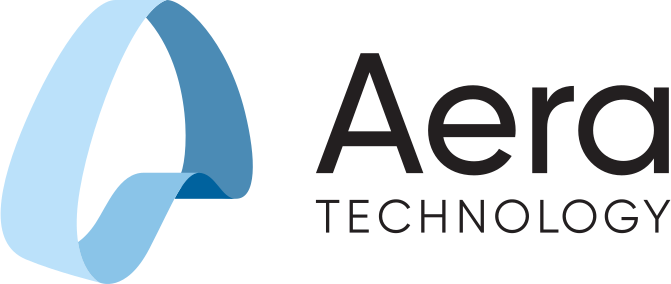Webinar Recap: Navigating Tariff Shifts with Decision Intelligence

Summary
In our Future.Now webinar, “Navigating Tariff Shifts with Decision Intelligence,” we explored how decision intelligence is helping global businesses respond to the growing uncertainty of shifting tariffs and trade dynamics. By combining real-time insights with intelligent recommendations and automation, decision intelligence is allowing organizations to respond faster, reduce risk, and build more resilient supply chain strategies.
The session highlighted how advanced technologies are changing the way companies manage the impact of tariffs — from rethinking sourcing decisions to increasing the speed and confidence of operational execution.
Key Takeaways
- Tariff Volatility is Here to Stay.
Over the past several years, companies have faced wave after wave of trade disruptions. Many are now accepting that tariffs and regulations will continue to shift, and long-term resilience requires more than spreadsheets and static models. - Traditional Planning Tools Fall Short.
Most organizations still rely on siloed data and slow decision cycles. These tools struggle to model dynamic trade scenarios or account for rapid shifts in cost and risk. As a result, decisions are often delayed — or made without full context. - Decision Intelligence Offers a Smarter Way Forward.
With decision intelligence, businesses can sense changes in tariffs in near real time, simulate multiple scenarios, and recommend optimal responses. This allows them to move from reactive mitigation to proactive opportunity management. - Cross-Functional Agility is Essential.
Shifts in tariffs affect sourcing, finance, logistics, and customer service — all at once. Successful responses require tight coordination across teams, supported by shared data, unified platforms, and AI-generated insights. - Demonstrating Impact Through Real Use Cases.
An interactive demonstration showcased how decision intelligence can identify tariff-driven cost increases, simulate alternate sourcing options, and automate recommendations — all within a matter of minutes rather than days or weeks.
Speakers
 |
Perry Loh, Principal, Supply Chain & Network Operations, Deloitte With over a decade at Deloitte, Perry leads digital transformation programs across industries including consumer goods, retail, and manufacturing, with a focus on supply chain strategy and execution. |
 |
Jerome Valtraco, Client Partner, Aera Technology Jerome helps large enterprises adopt decision intelligence as a strategic advantage. His background includes leadership roles in consulting, partner development, and enterprise solutions across companies like SAP, IBM, and Anaplan. |
 |
Suraj Ramalingam, Solution Engineer, Aera Technology Suraj brings extensive experience in global supply chain management, having held senior roles at Salesforce and Procter & Gamble. At Aera, he focuses on enabling customer success through technology-driven transformation. |
Full Recording
Q&A
Q: How does Aera get the data? Does that need to be manually fed, or can there be an integration to SAP to directly source it?
A: There are multiple ways to ingest data into Aera Decision Cloud. Data can be automatically ingested using Aera’s patented bidirectional crawlers, integrated through existing APIs or middleware, or uploaded manually through an SFTP portal.
Q: Do you have a classification tool to come up with the right HTS code?
A: Yes. The AI Agent can scan the Harmonized Tariff Schedule (HTS), identify applicable classifications, and retrieve the associated tariff information.
Q: Many disruptions are inherently not predictable, so how does Aera manage this? Or is it more about being able to respond more quickly than competitors?
A: Aera enables rapid response by ingesting data from diverse sources—structured and unstructured—and allowing companies to configure Skills quickly and independently. This allows organizations to act faster and more confidently than with traditional systems.
Q: How do you feed the data into the network model? Excel, contracts, other documents?
A: The platform accepts data in many forms, including Excel files, contract documents, and other structured sources. These can be ingested using crawlers, APIs, middleware, or manual uploads.
Q: From your experience, how long does it take to ingest all data and be able to actually simulate and run scenario planning?
A: A typical implementation for scenario modeling and simulation takes about 12 weeks. This includes data ingestion, solution design, user acceptance testing, and deployment to production.
Q: This works well for a direct OCONUS supplier, but how does it handle more complex cases like nested BOMs for components such as engines or electronic boxes with sub-tier OCONUS supply chains?
A: Aera’s Decision Data Model supports complex, multilevel bills of materials (BOMs). These structures can be fully ingested, analyzed, and used for calculations such as those shown in the demonstration.
Q: We’re talking about disruptions due to tariffs. Can the platform also handle disruptions caused by natural disasters, terrorism, or war?
A: Yes. Once the Decision Data Model is populated, new Skills can be built quickly to respond to virtually any type of disruption—including geopolitical events, environmental incidents, or supply chain shocks.
Q: What kind of in-house skills are required to set up and use Aera? How do leading companies bridge the gap between technical teams and business users?
A: Aera is a low-code, SQL-based platform supported by a robust enablement program. Business analysts and system administrators are trained to build and manage Skills, and business decision-makers can access the development environment directly to foster collaboration.
Q: How does Aera fit within end-to-end supply chain planning and execution systems? Can it work with demand planning tools and write back to those systems?
A: Aera acts as a System of Intelligence, integrating data from planning and execution systems such as APS, ERP, TMS, and WMS. It can ingest inputs from these systems and write back insights or decisions as needed.
Q: Has Aera used the Price Elasticity Skill for tariff-related scenarios? Can it model customer demand changes if prices are adjusted—or not adjusted—due to tariffs?
A: Yes. Aera can apply price elasticity models to tariff scenarios, forecasting how customers may respond to price increases or decreases. These capabilities can be used to simulate demand shifts and optimize pricing strategies accordingly.
Q: What part of the tech stack does Aera typically replace or augment? How do new customers usually begin working with you?
A: Aera typically augments systems like ERP, APS, TMS, WMS, MES, and data lakes. It harmonizes data from these platforms and applies decision intelligence to address a wide range of enterprise challenges.






